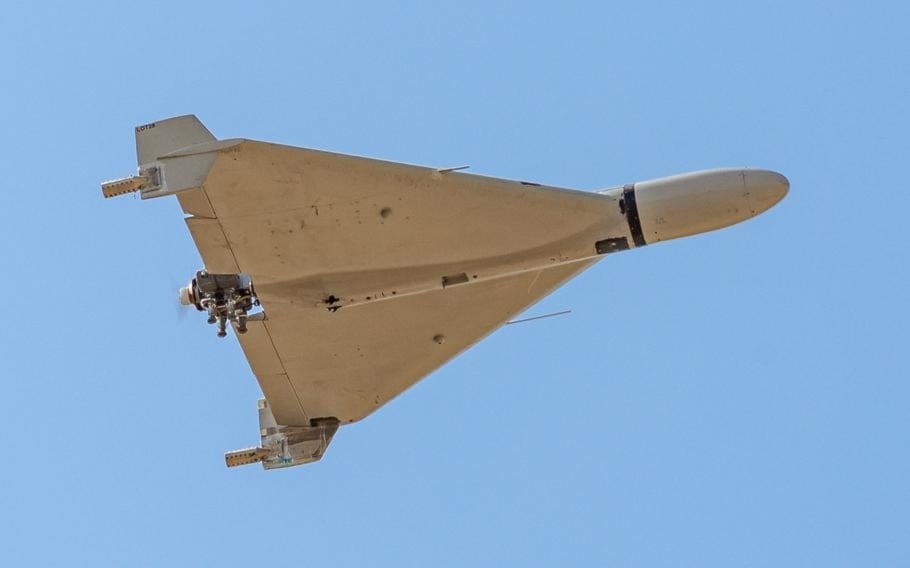Iran's advancing drone industry another Israeli intelligence failure
An Israeli security affairs correspondent says "Israel's defense systems are unable to deal with the Iranian drones launched by Hezbollah."
-

Iranian-made Shahed-136 ‘Kamikaze’ drone flies over the sky of Kermanshah, Iran on March 7, 2024. (Photo by Anonymous/Middle East Images/Middle East Images via AFP)
"Israel" is facing "another failure" of its intelligence system, manifested in the "rapid advancement" of the Iranian drone industry, the Israeli Zman Yisrael news website reported.
Arie Egozi, the website's security affairs correspondent, said that when most of the attention was directed to the Iranian nuclear program, Tehran established a massive industry of drones of various models, which are currently being used against "Israel".
"The problem is more serious than it seems, because Israel's defense systems are unable to deal with the Iranian drones launched by Hezbollah," Egozi stressed in a report.
He explained that these drones "have a low radar signature and fly at low altitudes, taking advantage of the terrain route in the north [of occupied Palestine]" and causing casualties and injuries.
According to the correspondent, the threat posed by Iranian drones is a problem that "Israel" did not anticipate in advance, and thus there is currently no solution for it.
The report recalled Operation True Promise, which Iran carried out in retaliation to the Israeli aggression that targeted its consulate in Damascus on April 13 and which saw the Iranian forces launch hundreds of drones and missiles toward Israeli targets.
Egozi noted that the attack occurred from a long distance, providing ample time for warning and preparation. He added that attempts to intercept the Iranian drones and missiles were made with the help of the United States and several other countries, as "Israel" could not do so alone.
In the same context, the Israeli correspondent mentioned that Iran exports its armed drones to its allies in the Axis of Resistance, who conduct military operations against "Israel" almost on a daily basis, and to other countries in the Middle East and beyond.
He cited a special report published by the so-called United States Institute of Peace, which claimed that Iran has at least 10 different models of suicide drones, which explode on impact.
The special report highlighted that these suicide drones can be as accurate as a ballistic missile, but they can fly lower to evade radar. Smaller models, such as the Shahed-136, according to the Institute's report, can carry about 45 kg of explosive material.
Iran on its way to becoming leading arms exporter
Egozi also cited security sources as saying that Iran, in recent years, and more actively over the past year, has increased the pace of selling and transferring drones to various parts of the world, including Ethiopia, Bolivia, and Venezuela.
One source indicated that Iran is on its way to becoming a leading arms exporter in the world, especially since other countries are interested in buying these capabilities.
According to the report, the economic profit Iran achieves from selling its drones is evident, with the price of the widely-used Shahed-136 drone ranging between $20,000 and $40,000.
The report claimed that the Iranian drone industry is racing forward with Russian assistance, adding that it is expected that new versions of attack drones will soon be unveiled.
In this context, Raz Tsimet, a senior researcher at INSS, suggested that Russia does not fully pay for the Iranian armed drones it receives, but in return, it secures advanced weapons systems, such as SU-35 fighter jets, to the Iranian Air Force or assist Tehran in a permanent supply chain of dual-use components for its defense industry.
Read more: Iranian drones show Iran's growing influence beyond the MENA: The Post

 4 Min Read
4 Min Read








